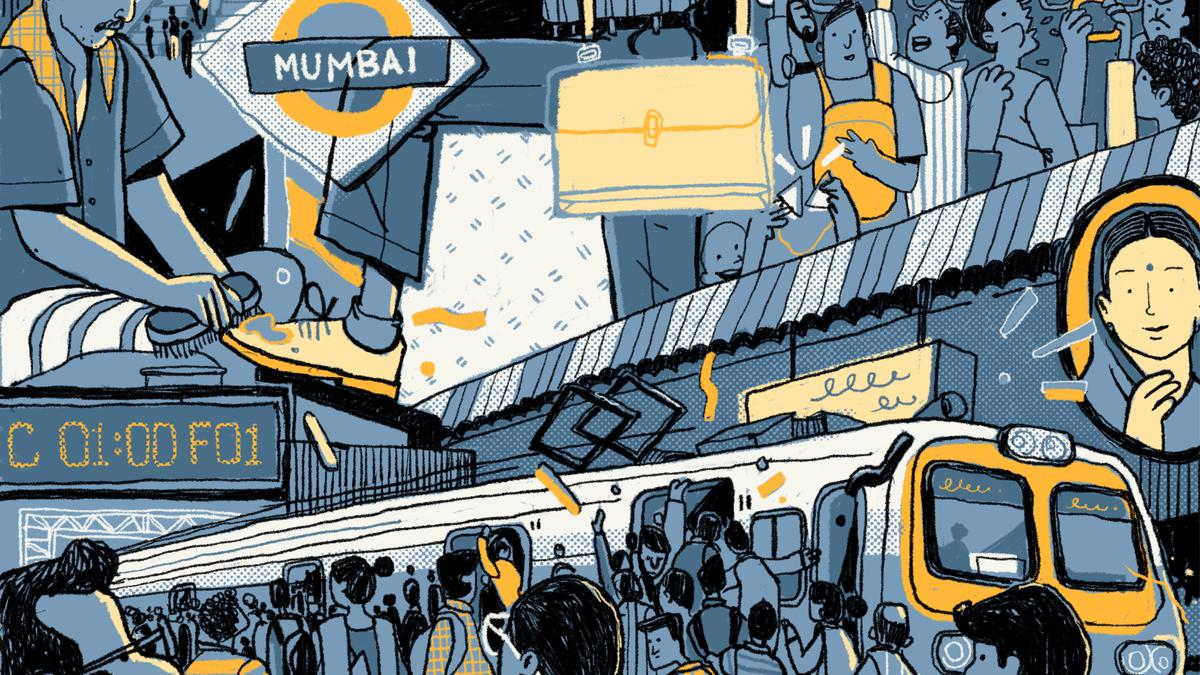
Mumbai in (slow) motion | Will the new MTHL, coastal road and Metro Aqua line reduce traffic snarls in the city?
The Hindu
Mumbai's iconic skyline is a testament to its ambition to become a world-class metro. Despite its impressive array of affordable, yet congested, public transport, the average Mumbaikar faces long, life-threatening journeys to the island city. This month, the ₹17,000-crore Mumbai Trans Habour Link and private water taxis will launch, while the Mumbai Metro's Aqua line and coastal road are expected to open soon. However, these projects are unlikely to benefit the average commuter. To truly alleviate everyday commuting woes, authorities must focus on developing missing links in connectivity, introducing congestion tax, procuring buses, and strengthening the civic transport system.
This month, the ₹17,000-crore Mumbai Trans Habour Link (MTHL) connecting Mumbai with the satellite city of Navi Mumbai, in planning since 2004, will be finally opened to the public. Also expected to launch are private water taxis between Navi Mumbai and Mumbai, reducing travel time by an hour. And if things run as per schedule, Mumbai Metro’s ambitious 33-km Aqua line, linking the southern tip of Colaba with Bandra and SEEPZ Village in the western suburbs, will be completed soon and ready for service early next year, followed by the opening of the much-hyped coastal road in February 2024.
These mega infrastructure projects, designed to decongest the existing road network and upgrade everyday commute, however, are not likely to benefit the average Mumbaikar living in the far suburbs and forced to undertake long, life-threatening journeys to the island city for work.
Babytai Kumthekar recalls the fanfare around the AC local trains when they were introduced five years ago with the promise of an efficient and comfortable daily commute. “But second-class passengers like me cannot afford the AC fare,” laments the 50-year-old who works as a domestic help in South Mumbai. “The return ticket on an AC train [₹200] costs nearly as much as a second-class monthly pass [₹300].” Mumbai’s famed suburban rail network, spread over 390 km, carries more than 8 million commuters daily, and residents like Kumthekar, who lives in Virar in Mumbai’s northern suburbs, depend on the service to get to their jobs on time.
Mumbai is India’s first city — urbs prima — its richest, and a bustling financial nerve centre renowned for its fast-paced lifestyle and cosmopolitan vibe. It is aspirational for millions across the country to live and make it here. Yet, the reality of life for the average Mumbaikar is filled with the dread of daily commute whether by overcrowded trains or on congested roads. It’s almost a rite of passage to run and catch a moving “local” — as the suburban trains are known — feel out of breath in an overcrowded compartment, suffocate in the soggy, humid proximity of passengers, and even lose consciousness.
The first time I travelled ‘latak ke’ — Mumbai slang for ‘hanging on for dear life on a packed local’ — my college backpack half-flying in the air and my body at a 70-degree angle out of the train, I thought I would end up in the official statistics of the 1,000-odd commuters who die every year falling off running trains in the city. My ordeal continued through college and later, work, even as I pinned my hopes on the next big transportation project aimed at alleviating everyday commuting woes. It’s a promise upon whose fulfilment every generation of Mumbaikars has grown up fantasising about.
At the same time, perhaps no other metro city in the country offers as many options for mass transportation as Mumbai: a well-established suburban rail network, intercity bus system, monorail, and a still-developing metro rail, along with metered rickshaws and taxis. A host of measures such as the addition of 15-coach local trains, AC coaches, large and mini AC buses, expansion of rail routes and station capacity, construction of new roads and bridges, has attempted to streamline traffic, combat congestion and enhance connectivity.
At the end of October, the iconic red double-decker bus and the black-and-yellow Premier Padmini taxi, a constant fixture on Mumbai’s streets for decades, were phased out and substituted by the first-of-its-kind double-decker air-conditioned electronic buses and CNG-run taxis.













